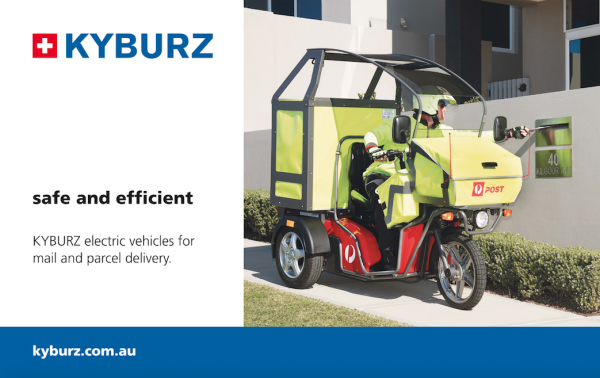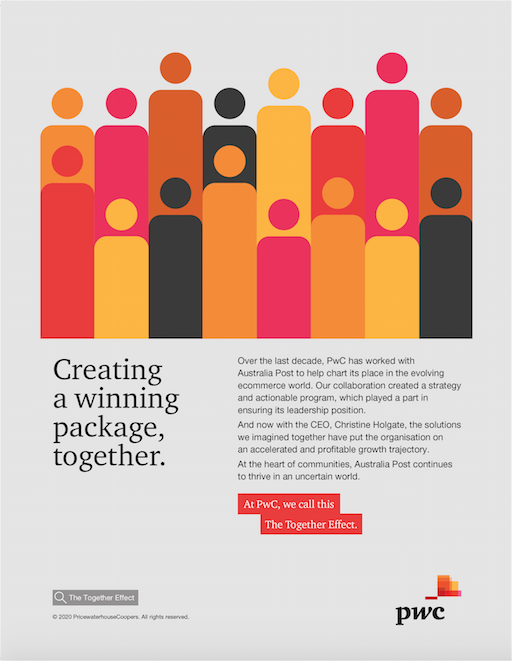COVID-19 has forced institutions and individuals to adapt to a radically different world, one that isn’t short of challenges. Even before the pandemic, Australia Post was facing its fair share of obstacles, with financial difficulties presented by the decline of letter deliveries.
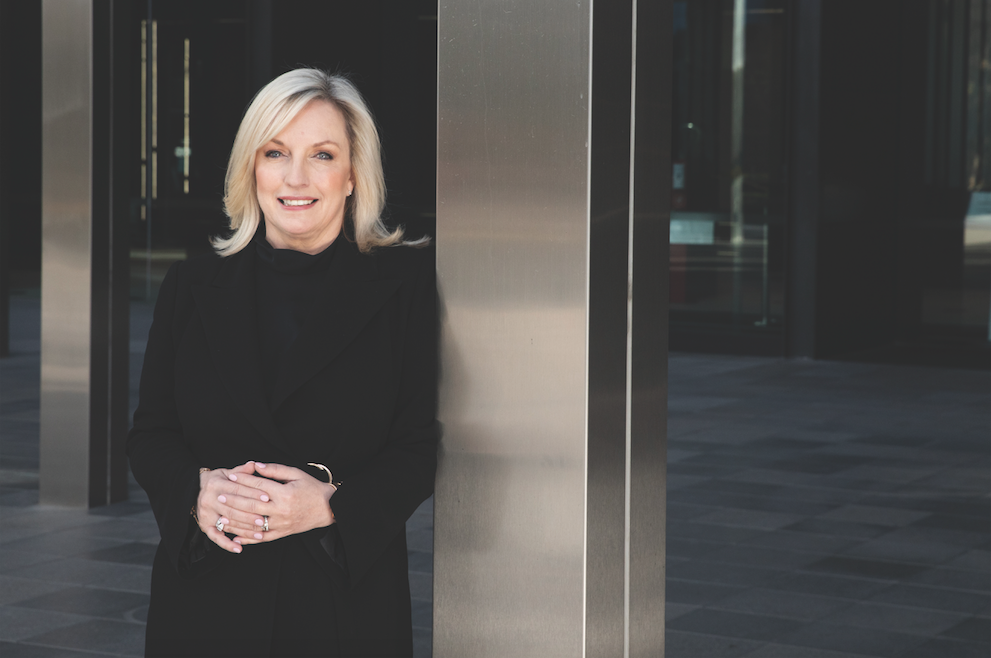
This story first appeared in the September/October 2020 ANZ edition.
Introducing new demands like sanitary workspaces and social distancing could well have been a serious blow to the organisation. That is to say, it could have been a serious blow if not for the leadership of Group CEO and Managing Director, Christine Holgate.
Though Christine has only been with the organisation since the end of 2017, she’s already had plenty of experience guiding Australia Post through dire straits. Even with this competence, COVID-19 represented an entirely new challenge – 1.4 million more households shopped online in April when compared to the same month in 2019.
“Our strategy through this crisis has been simple and strong – to protect our people, serve our country, and safeguard our business,” Christine shares. “It’s like we’ve had 10 weeks operating like Christmas,” she continues.
“Because of social distancing and the need to stay home, the items being purchased have been larger and heavier than we would normally see as people have upped their purchasing of wine and goods for the home office. We’ve had to make arrangements to handle more manual processing, moving quickly to open 16 new or repurposed processing facilities across the country and recruit hundreds of casuals to assist in managing the continued parcel demand.”
“It wasn’t about leaving anything. It really was about joining something.” – Christine Holgate
Normally, Australia Post has months to prepare for peak periods like Christmas, but the pandemic took everyone by surprise. The cancellation of domestic flights led to the chartering of extra freighter flights, and staff have worked weekends to get through the massive volume of deliveries.
But it has paid off for Australia. According to a recent Deloitte Access Economics report, the additional processing and delivery activities have supported A$2.4 billion in additional ecommerce activities across Australia, with nearly a quarter of that going to rural and remote areas.
Thousands of small businesses have benefited from Australia Post services, and millions of transactions were enabled that otherwise would’ve been impossible due to lockdowns.

In the three months of March to May, the organisation contributed A$1.8 billion to GDP, which supported the equivalent of 58,800 full-time jobs around the country.
COVID-19 may have caught the world off-guard, but the 211-year-old organisation has adapted quickly and competently.
Physical contact between customers and staff was quickly minimised through protective measures, staffing changes and extensive communication.
“We have implemented strict safety and infection control measures to keep our people, customers and the community safe,” Christine says.
“We know that reducing physical contact is a priority for everyone, and this is likely to remain so for many months to come.
“We are always listening to the feedback from our customers, and using this to inform our strategy, innovations and processes. We are constantly adapting and looking for new ways to give our customer more choice and control so that we can better meet their ever-evolving expectations and improve their experience.”
A new world
Given Christine’s previous achievements in leading Australia Post, it’s little surprise she’s been so effective at guiding the organisation through the pandemic. The corporation’s financial challenges were well documented prior to 2019.
This largely revolved around the organisation’s letter business, which declined nine per cent in 2019 and accelerated during COVID-19 to 36 per cent in May 2020. This side of Australia Post’s operations may seem its central pillar, and the rise of digital communication may seem a death knell to such a business.
Indeed, Australia Post reached ‘peak mail’ in 2008, with mail volume declining over each of the following years since. In the face of this decline, organisational growth would seem almost a pipe dream. Nevertheless, that’s exactly what formed part of Christine’s initial strategy, alongside an effort to listen and learn from employees.
“If you reach out and ask for help, people do want to help you.” – Christine Holgate
She described the business as being “stuck in the sixes” when she joined, a reference to the organisation’s revenue. Despite the challenges inherent in rapid transformation, she was determined to break out of the ‘sixes’, and get the organisation back onto a growth trajectory.
“When you’ve got a business where one of your largest product lines, your oldest business, is going backwards, I think it would be fair to say a lot of people thought I was crazy,” Christine admits.
“And where the top line of the business hadn’t grown more than one or two per cent, even after a significant stamp price increase in 2016, I think it’s fair to say a lot of people wondered whether we could do it. I think our recent results are evidence we can do it.”
In her first full financial year in the role, Christine achieved an underlying growth rate without making any major acquisitions, instead applying the lessons she had learned from the loyal employees, and focusing on the customers, using the business’s existing strengths.
Underpinned by overwhelming employee and customer feedback, a strategy was announced in 2018 to go back to the core red and white Australia Post brand, building ‘One Team’ to unite people, prevent confusion among customers and end a division that had previously undermined organisational morale.
That translated into a revenue of just under A$7 billion in the 2019 financial year, with almost A$4 billion driven from the parcels business. Christine says there are few companies of similar revenue to the parcels business with a greater growth rate; at the time, only five other ASX-listed businesses outperformed Australia Post’s revenue growth (excluding letters).
Letter delivery represented 30 per cent of the business (but is going backwards), while the remainder now comes from highly competitive and quickly growing markets (parcels, payment and financial services, identity services and international services), and operations continue to move towards those competitive markets.
United in purpose
It’s unlikely that Christine would have been so successful in engineering that financial downturn were it not for the sense of determination embodied by Australia Post and its people. “I left my job at Blackmores, but it wasn’t about leaving anything,” she recalls.
“It really was about joining something. I grew up in a small village in Britain, and I saw firsthand how important the post office and the postie were in supporting the viability of that community. I was very aware that the roles of the postie and the post office, unless they were transformed, would come under threat.
“While the letters business is clearly declining, the role of the post office has increased.” – Christine Holgate
“In Australia, so much of this country is rural and remote. So what really appealed to me was the purpose of the organisation, and I think to be able to play a part in terms of rejuvenating the crucial function that Australia Post has had in those communities. I think it’s hugely attractive and incredibly rewarding.”
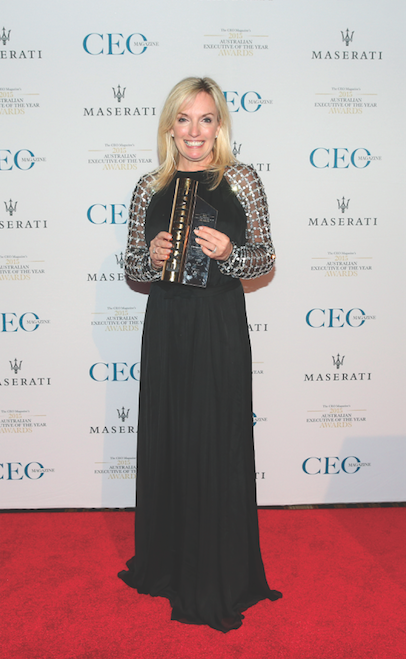
Admittedly, Christine had some reservations about leaving Blackmores; she wasn’t sure if she’d find another organisation with such a commitment to purpose. But within her first couple of weeks at Australia Post, a survey she organised found that 98 per cent of the organisation’s staff had joined exactly because of its purpose.
It didn’t nullify the challenge of joining a new organisation as Group CEO and Managing Director, she says, but having that connection from the start to a mission of community service was enormously beneficial.
“It was just a set of questions that was really trying to get a sense of where our employees thought the priorities and opportunities were inside the organisation,” Christine explains.
“It didn’t matter whether they were on the board, a postie, a driver or working in mail sorting; they all agreed on what the strategic priorities were.
“There was a disconnect only in one area: our people on the front line felt they were very customer-focused – clearly they were knocking on the doors of customers every day or serving them in shops – while people in more senior levels felt they’d lost a little of that customer focus, because they were organised around products. That’s not so surprising, but that was the feedback.
“But overall, there was massive alignment about what needed to happen in the organisation, what the challenges were, and what the focus areas should be. If you listen to your own employees first and your customers and stakeholders, I think you learn a lot. It doesn’t mean you agree with it all, but you learn a lot. My approach was about listening and reflecting upfront.”
Taking a listening approach is not all that unusual for a leader. But what made Christine’s strategy unique is the extent to which she did it. Before she officially took over as Group CEO and Managing Director, she took a busman’s holiday, visiting the CEOs of 10 other postal organisations around the world, trying to understand their challenges and strategies.
Christine Holgate: advocate for female leaders
While her achievements in revitalising Australia Post’s flagging prospects are impressive in themselves, it’s also notable that she’s the first woman to lead the centuriesold organisation. But as she notes, it’s a step forward that should have come much sooner. “It’s almost sad that I am the first woman to run Australia Post. I think we still don’t have enough women in leadership, full stop,” she asserts. “What I would honestly say is I found it incredibly welcoming. About 37 per cent of our workforce is women, but every man has a mother, a daughter, a sister, a female person in their lives. I felt nothing but warmth and welcoming to that position. “There are a few female CEOs, maybe five in the postal world, and three of the women at the time who were running USPS, Royal Mail in the UK and Swiss Post immediately reached out to me and said, ‘Hey, we have another sister.’ As a result, I became really close friends with Susanne Ruoff, then CEO of Swiss Post, in particular. So being a woman, if anything, was a positive, because perhaps it encouraged other women to be even more supportive, because there are so few of us.” In 2015, while she was still at Blackmores, Christine won The CEO Magazine’s CEO of the Year Award (pictured) – the first woman to do so. The morning after the awards, she came into the office to find flowers and Champagne everywhere. The gifts came from the many people who’d heard about the award; even if they didn’t know Christine personally, they were thrilled a woman had not only been recognised but won. Christine believes that recognition encourages other women to strive, especially those who have been campaigning for exactly that kind of inclusivity and diversity.
“It is incredible,” she says. “If you reach out and ask for help, people do want to help you.” Back in Australia, she toured Australia Post centres, totalling some 115 post offices and around 30 delivery centres around the country.
These weren’t just in the big cities either; true to her village upbringing, Christine dropped in to small-town post offices, giving her the chance to hear from frontline staff before she’d even spoken to the organisation’s senior managers.
“I particularly did that in places outside of metro areas to really check what this role was that Australia Post was playing inside rural and remote Australia,” she explains.
“That’s what I could see when I look at my mother living in a tiny little village in England, where there’s one shop and it happens to be the post office. The next village has lost their post office, and I’ve seen what’s happened to that community as an outcome of that. Those people on the front line gave a very interesting perspective on what the challenges were.”
For the people
Sure, the letters business has been declining and still is, but the importance of the post office to healthy communities can’t be understated – particularly, as Christine has noted, when it comes to smaller rural or remote communities.
She believes Australia Post is one of the largest socio-economic contributors to small towns, and this has been proven during the pandemic. In much the same way rural communities relied on the post office’s services during the Black Summer bushfires, Australia Post has helped the population stay connected through COVID-19.
Christine cites partnerships with Woolworths and the Pharmacy Guild of Australia in particular as ways to provide access to important resources to more vulnerable Australians who were unable to leave their homes.
Even before the pandemic, Australia Post’s value to small communities was evident. Christine was particularly thrilled by the results from a survey from Deloitte Access Economics earlier this year.
“It said 96 per cent of people in rural and remote Australia knew and used, and believed in, their local post office,” she says.
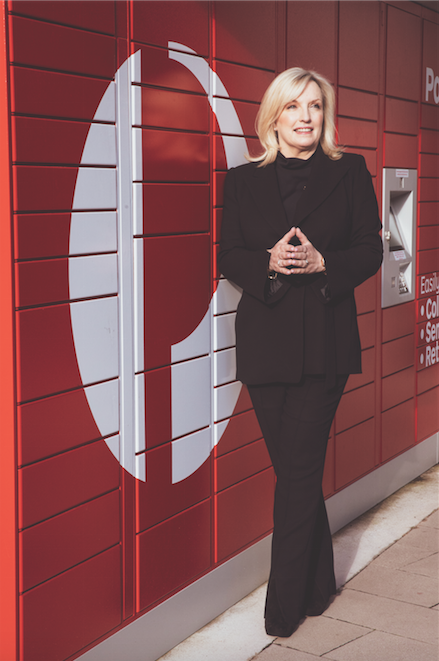
“92 per cent of people thought Australia Post was critical to equality of access to core services. What I loved was the fact that while the letters business is clearly declining, the role of the post office has increased, or the importance of the post office has increased, in the last five years. It has not shrunk.
“I think we’ve been incredibly lucky. We first got support from three major banks, CBA, Westpac and NAB. They’ve contributed and helped us turn around what was a declining channel. Now Australia Post is the largest financial services partner for rural and remote Australia. We have more than 80 banks and financial institutions, and more transactions than anybody else. That has been the major way that we’ve created a new purpose for the post offices. I call it being the ‘teller of the nation’.”
With the major banks closing hundreds of branches in recent years, such services will be hugely important for communities that may otherwise be left without access to essential banking services.
Equally, these partnerships are essential for keeping Australia Post relevant to the lives of people across Australia; Christine believes that the business must continue to evolve and update services to maintain the high levels of support from the community, and professional partnerships are critical for this effort.
“We live in increasingly uncertain times and, with that, we are all experiencing a time that is quite unlike anything that this generation has experienced,” Christine says. “To that end, it’s our partnerships that are more important than ever before, whether they are with people or organisations.
“Just like each person’s experience is different, each organisation’s experience is different too – but it’s the sharing, the listening and the learning from those experiences that make us all better for them. Whether they be our business partners, our corporate partners, our posties, post office licensees, delivery drivers or unions, it all comes down to maintaining strong working relationships.”
Proudly supported by:
